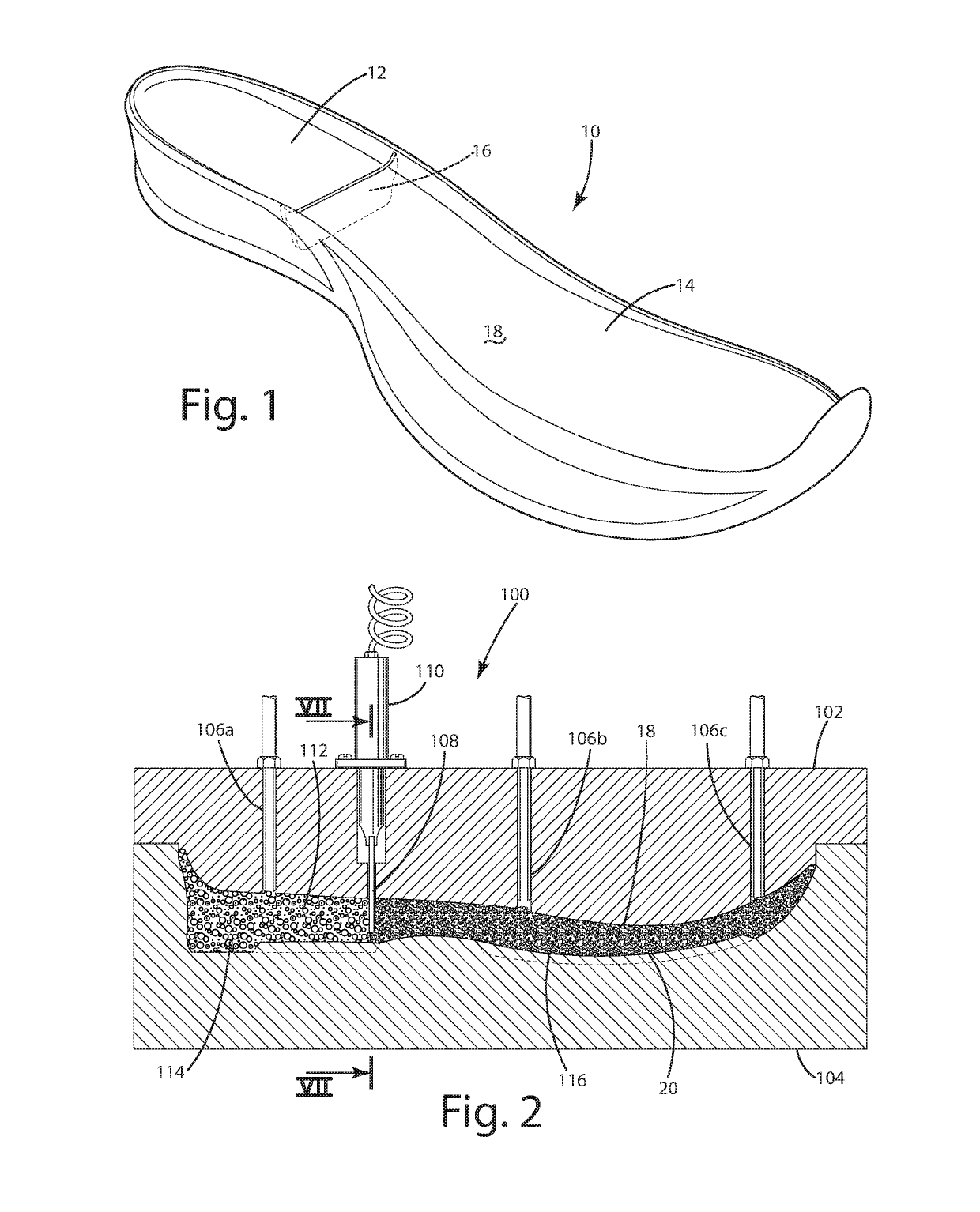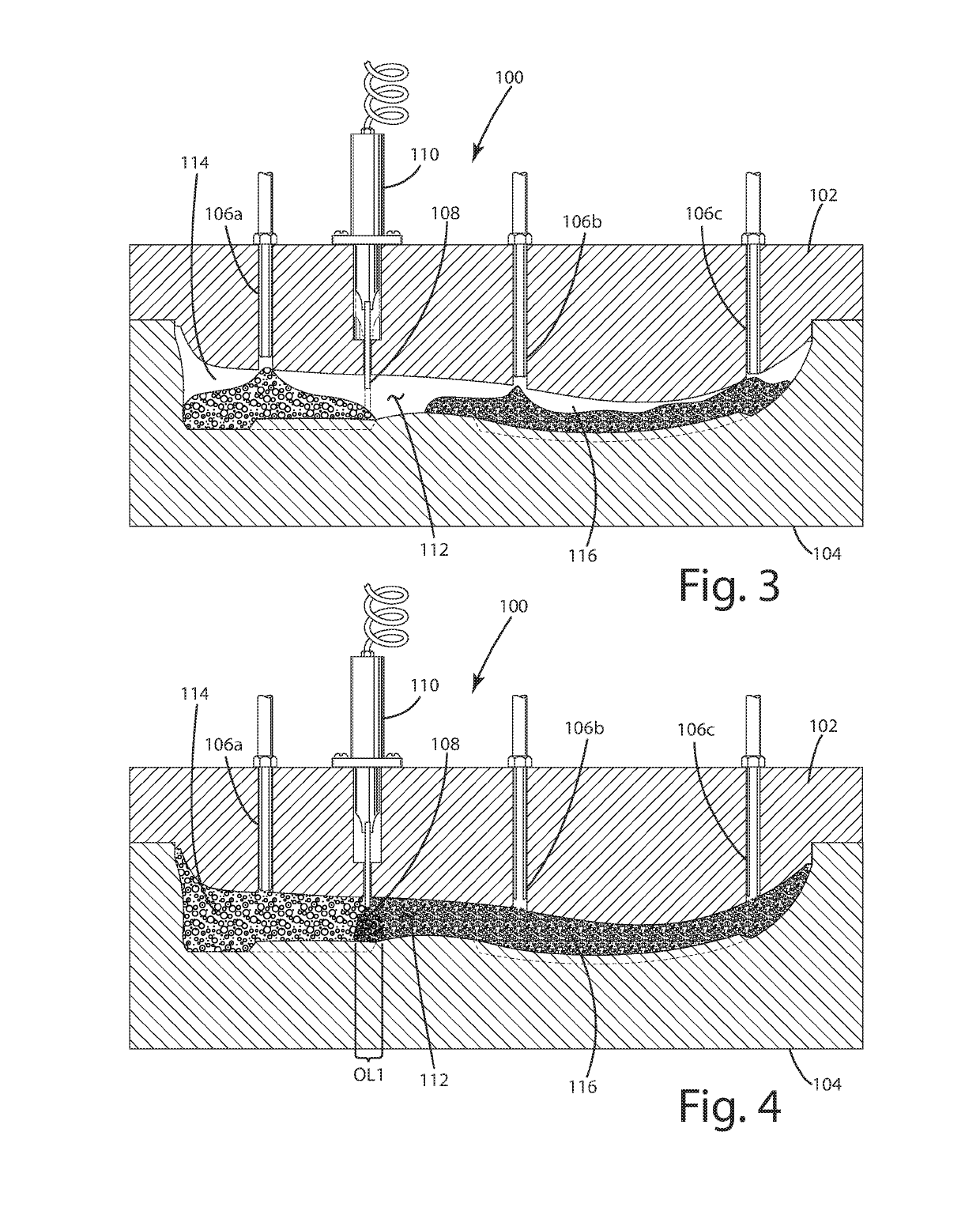Method and apparatus for manufacturing footwear soles
a technology of foam beads and footwear soles, applied in the field of footwear, can solve the problems of affecting performance or making the sole less comfortable for the wearer, and achieve the effects of simple and effective control of the location, intermingling or overlap, and improved bonding
- Summary
- Abstract
- Description
- Claims
- Application Information
AI Technical Summary
Benefits of technology
Problems solved by technology
Method used
Image
Examples
Embodiment Construction
Overview
[0039]A sole component 10 manufactured from bead foam in accordance with an embodiment of the present invention in shown in FIG. 1. The sole component 10 is manufactured with a heel portion 12 and a forefoot portion 14 formed from two different foam bead types. The foam beads may vary in essentially any way, such as variations in size, shape, color, resiliency, durability or other functional or aesthetic characteristics. The sole component 10 defines a gap 16 extending downwardly from the top surface 18 toward the bottom surface 20. The gap 16 extends partially (and not entirely) through the thickness of the sole component 10. The gap 16 provides a region of defined separation between the heel portion 12 and the forefoot portion 14. The portion of the sole component 10 below the gap 16 includes an intermingling or overlapping of the foam beads from the heel portion 12 and the forefoot portion 14. In alternative embodiments, the number, location, arrangement and configuration...
PUM
| Property | Measurement | Unit |
|---|---|---|
| Thickness | aaaaa | aaaaa |
| Color | aaaaa | aaaaa |
| Size | aaaaa | aaaaa |
Abstract
Description
Claims
Application Information
 Login to View More
Login to View More - R&D
- Intellectual Property
- Life Sciences
- Materials
- Tech Scout
- Unparalleled Data Quality
- Higher Quality Content
- 60% Fewer Hallucinations
Browse by: Latest US Patents, China's latest patents, Technical Efficacy Thesaurus, Application Domain, Technology Topic, Popular Technical Reports.
© 2025 PatSnap. All rights reserved.Legal|Privacy policy|Modern Slavery Act Transparency Statement|Sitemap|About US| Contact US: help@patsnap.com



